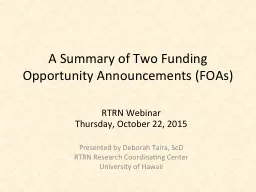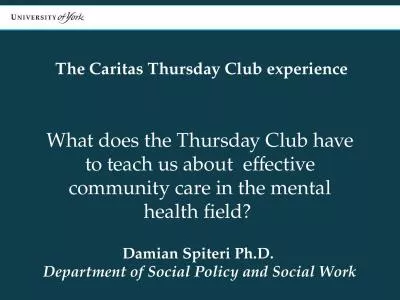PPT-RTRN Webinar Thursday, October 22, 2015
Author : CuddleBunny | Published Date : 2022-08-01
Presented by Deborah Taira ScD RTRN Research Coordinating Center University of Hawaii A Summary of Two Funding Opportunity Announcements FOAs Translational Research
Presentation Embed Code
Download Presentation
Download Presentation The PPT/PDF document "RTRN Webinar Thursday, October 22, 2015" is the property of its rightful owner. Permission is granted to download and print the materials on this website for personal, non-commercial use only, and to display it on your personal computer provided you do not modify the materials and that you retain all copyright notices contained in the materials. By downloading content from our website, you accept the terms of this agreement.
RTRN Webinar Thursday, October 22, 2015: Transcript
Download Rules Of Document
"RTRN Webinar Thursday, October 22, 2015"The content belongs to its owner. You may download and print it for personal use, without modification, and keep all copyright notices. By downloading, you agree to these terms.
Related Documents














